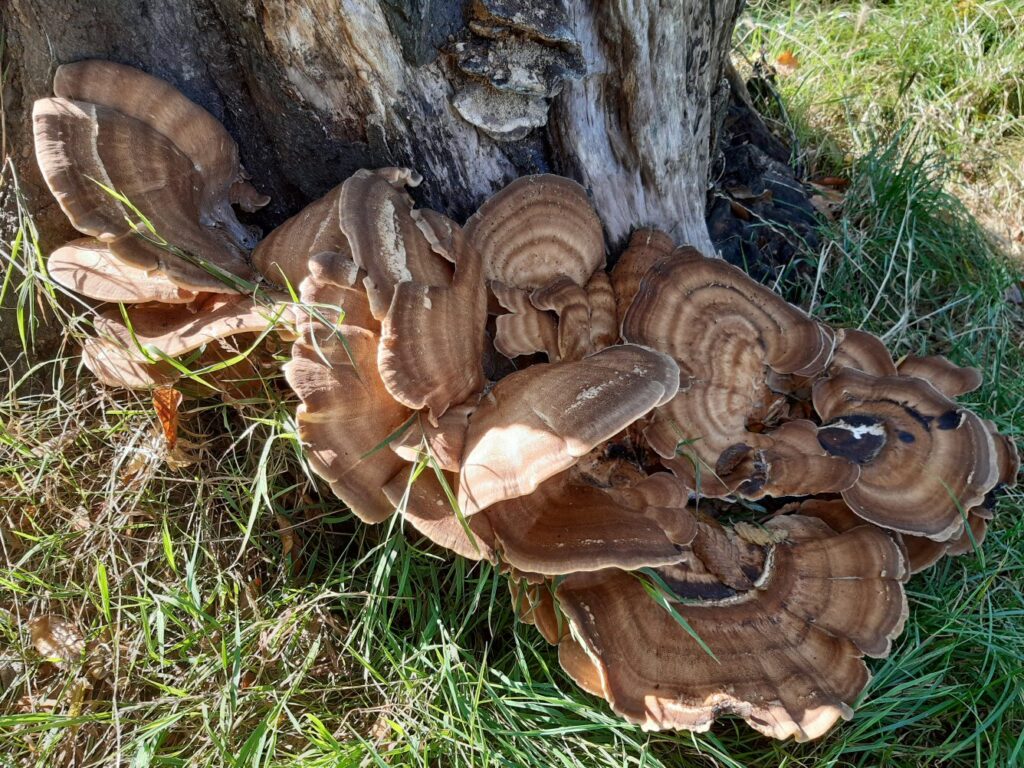
Giant polypore, Acton Green


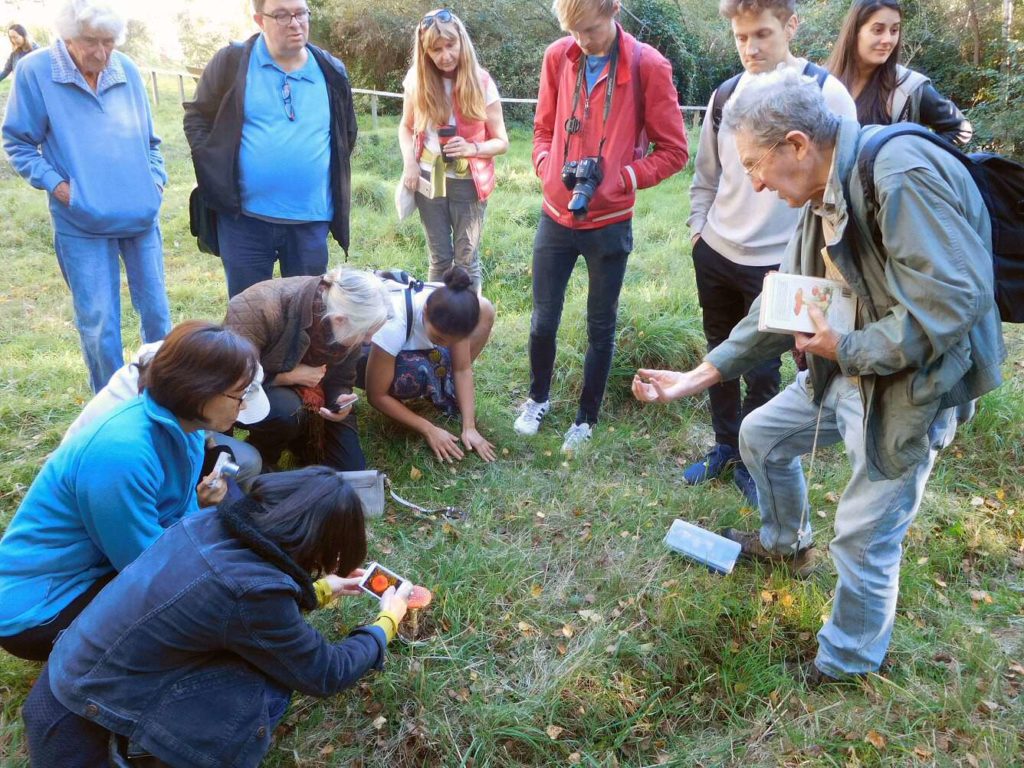
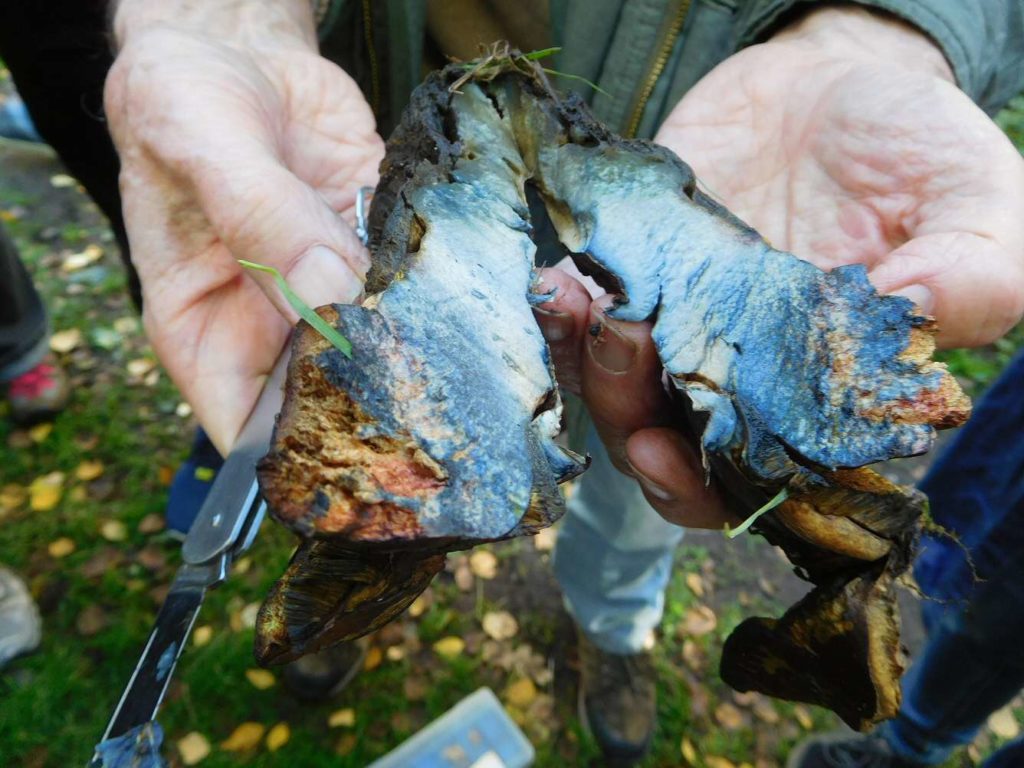
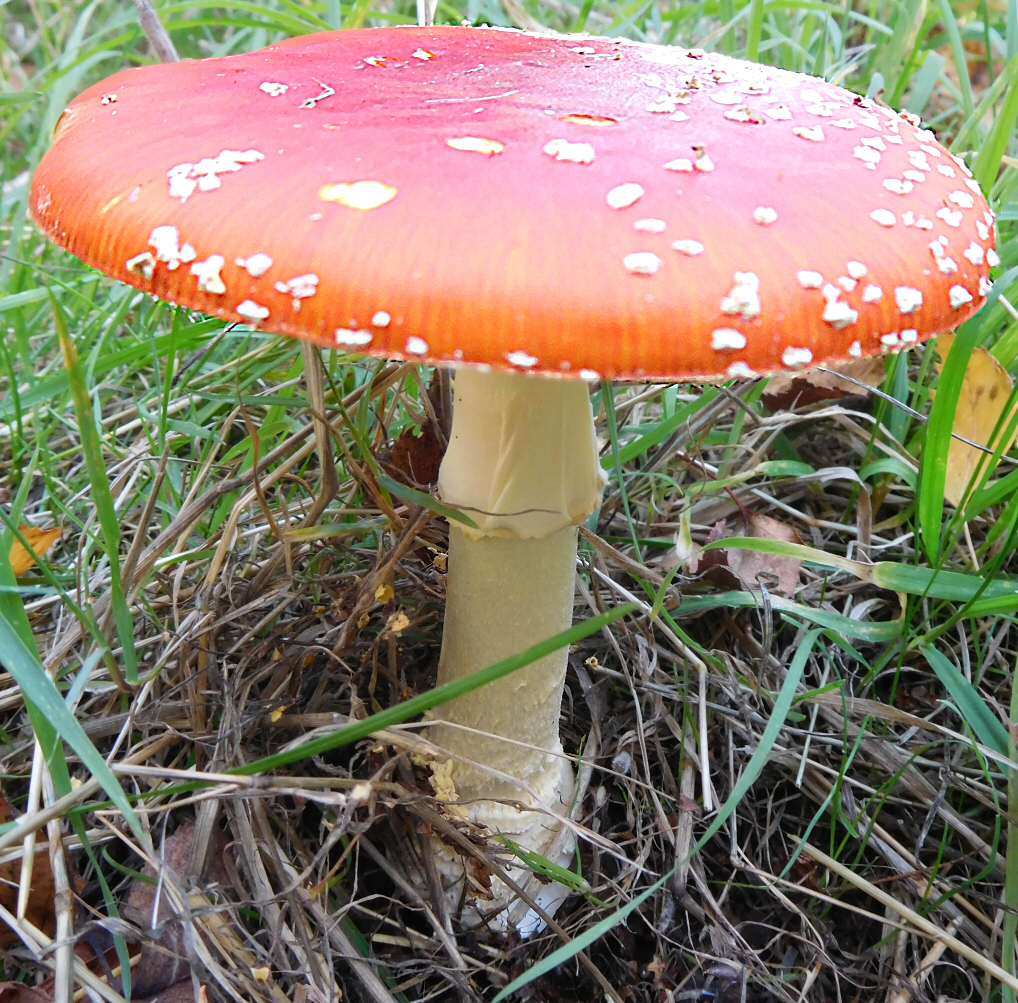
It was a beautifully sunny and warm late October day, and Alick was pessimistic. It had been far too dry for weeks and there would be very few fungi on the walk. But he admitted that children were very good at spotting mushrooms.
They were. We found 31 species, more if you count the small Ascomycetes of the kinds whose fruiting bodies are little dots on rotting twigs. Some indeed like the Fly Agaric and the Scarletina Bolete were large, colourful, and spectacular; others smaller and quieter, but often also beautiful, and all fascinating. None were stranger than Crepidotus mollis, the Peeling Oysterling, a bracket-shaped gill mushroom with a peeling cuticle, and an extraordinary jelly-like consistency revealed by gently stretching the cap, as shown in the photo.
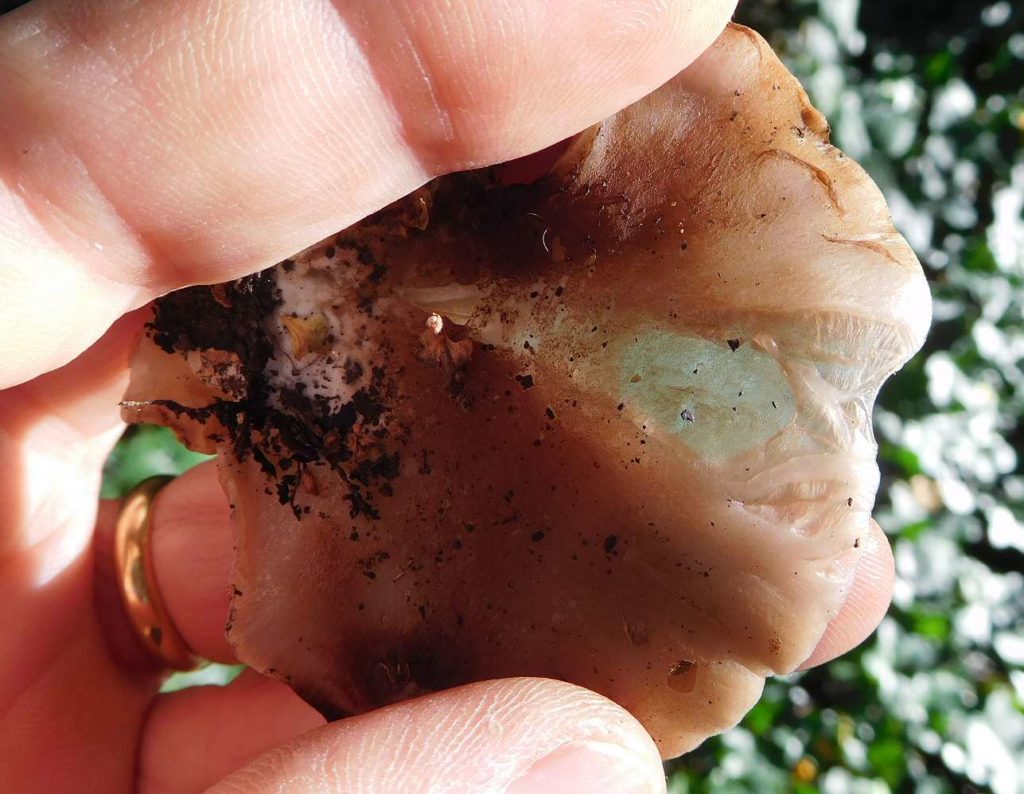
Alick Henrici writes that he found four species new to the reserve during the Fungus Foray:
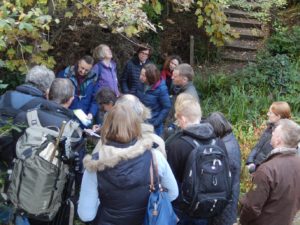
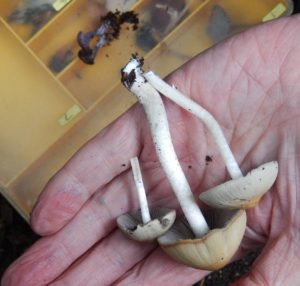
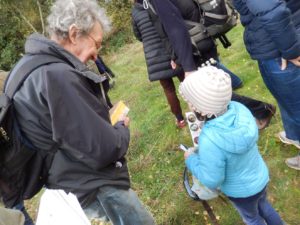
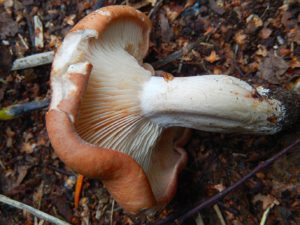
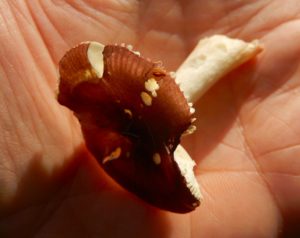
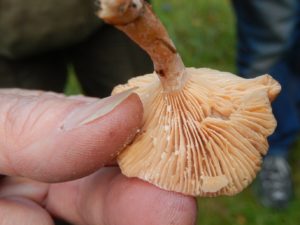
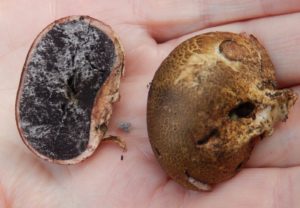


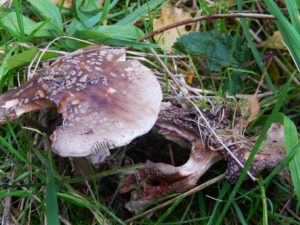
Apart from the fungi named in the image captions, we also saw plenty of the Deceiver (Laccaria laccata); Amethyst Deceiver (Laccaria amethystina); assorted species of Fairy Bonnets (Mycena spp.); the Brown Rollrim (Paxillus involutus); Puffballs (Lycoperdon perlatum); and more. There was hardly any Birch Polypore – we often have fine big white brackets of them: just one small nodule, Piptoporus betulinus.
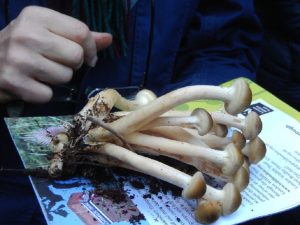
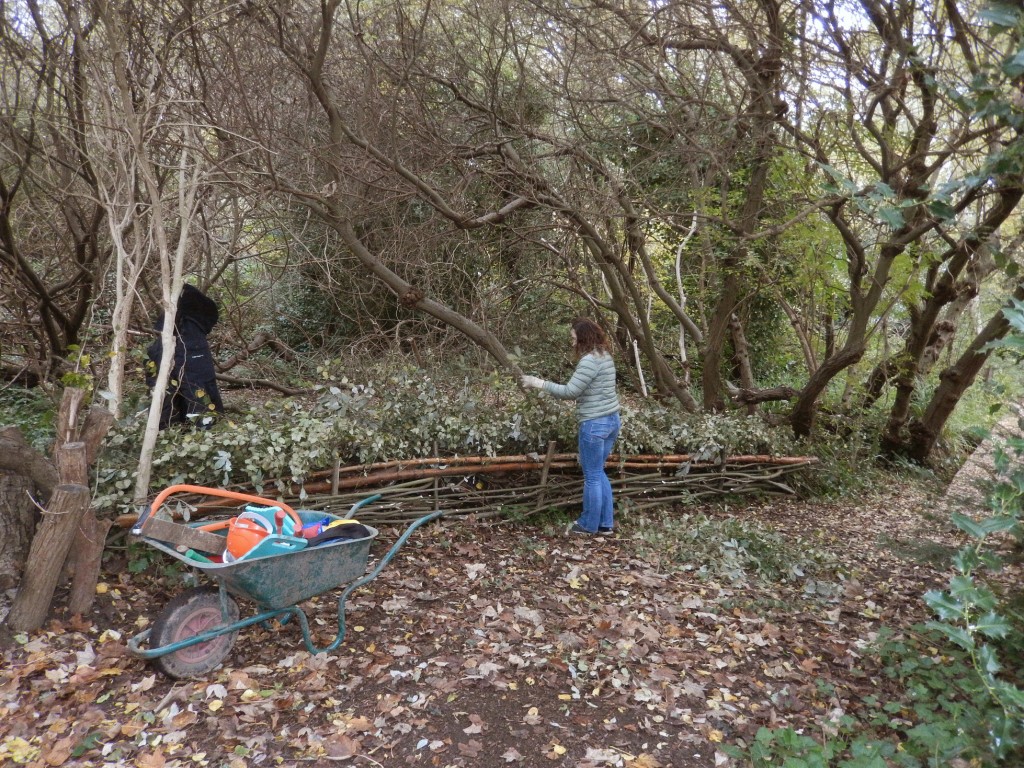
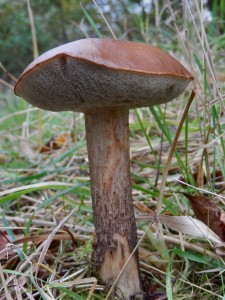
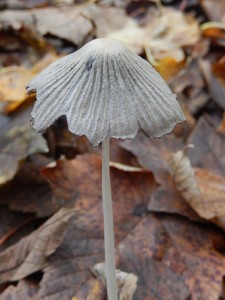
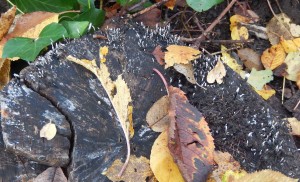
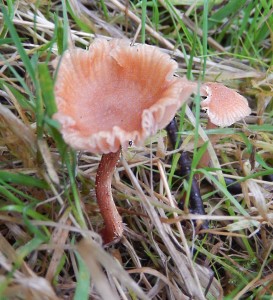
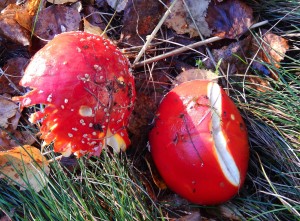
More Fungi at Gunnersbury Triangle (25 October 2015) including Collared Earthstars
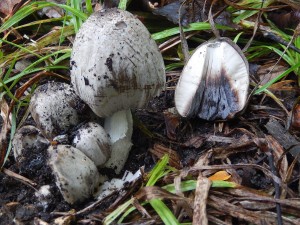
This small handsome Earthstar appeared close to where we had a large Collared Earthstar (Geastrum triplex) last year. However this one as yet has no sign of a collar, so either it’s a baby or it’s another species. Will be interesting to see what happens. Right now my money’s on the baby theory.
Well (a week later), they have stayed the same size and shape, only there are now as many as seven fruiting bodies within 30 cm of the original site.
Well, despite the extraordinary warmth of both September and October – I was still working in a T-shirt down at the Gunnersbury Triangle nature reserve today, anything more being too hot – the fungi have finally come out in earnest. This small speckly Dapperling seems to be Lepiota hystrix, a rare species.
Several fungi were on show on a pile of birch logs, including a large Birch Polypore and some elegant smaller Turkeytail brackets as well as Orange Curtain Crust.
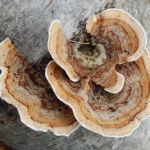
These handsome Common Cavaliers were growing beside the path.
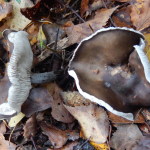
Many damp rotting sticks and stumps had Stagshorn or Candlesnuff fungus growing out of them, Xylaria hypoxylon. These were thin and stick-like early in November, well-developed by 20 November.
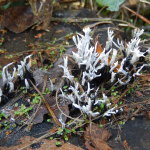
In the anthill meadow were plenty of puffballs, Lycoperdon perlatum. They certainly looked pearly, as their specific name suggests.
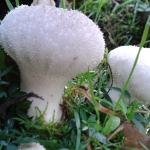
In the picnic meadow was a tall slender yellow Inkcap, Coprinus auricomus.
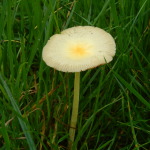
A long-bodied wasp, surely a queen, was trapped in the surface film of the pond by the parish boundary stones. We rescued her with a stick to get a closer look.
Two days later: the weather has turned more autumnal and showery. More fungi have popped up, including quite a few Clouded Funnels, Clitocybe nebularis, behind the anthill meadow. The display of Puffballs is fine, the large clean specimens having an obviously grainy, almost pearly surface.
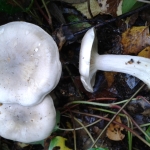
Some Sulphur Knights, Tricholoma sulphureum, have grown up behind the loggery at the base of the mound by the pond. They are deep orange-yellow, quite thick-stemmed, with an flattened or dished cap and widely-spaced gills that barely touch the stem.
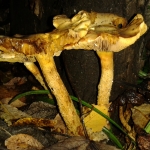
I found a broken Blusher mushroom, Amanita rubescens, in the anthill meadow. In this family of poisonous fungi, some deadly, it is edible when properly cooked, though the water it is cooked in must be thrown away.
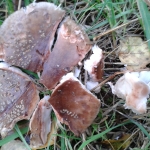
And a single small Slippery Jack, a suitably slimy bolete. It was yellower than the photograph shows, the cap appearing a shining light brown, the pore surface underneath rather yellow.
By the 6th of November it was far colder, and there were fewer species on show, with Fly Agaric, Clouded Funnel, quite a few Butter Caps, and this small gelatinous fungus on dead willow, Tremella mesenterica. I also found a small fragment of an brown Amanita with a white stem, probably A. pantherina, the poisonous Panther Cap.
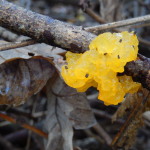

There were several Pale Brittlestem at the edge of the Anthill meadow under Birches, bordering the strip of acid grassland where the railway used to be.
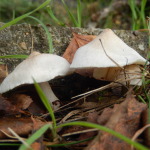
By the 9th of November, things were visibly more autumnal; the Clouded Funnels were still about, now large and more clearly funnel-shaped; a few Butter Caps persisted, along with the Puffballs. The small fungus Phoma hedericola (‘hedera’=Ivy)was by now making large obvious spots on ivy leaves.
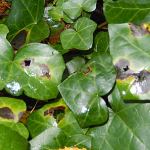
These little toadstools with a cream-coloured, slimy cap and whitish fleecy stems were growing out of a loggery, the dead wood half-buried in the soil. They may be the Sticky Scalycap, Pholiota gummosa.
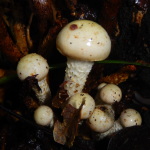
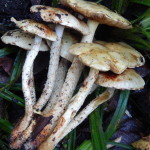
Finally, no collection of fungi is complete without The Deceiver, Laccaria laccata, which comes in a variety of sizes, shapes and colours. It’s typically rather russet-brownish and the stem is quite thin, often a bit flattened and twisted. The cap can be round or wrinkled; it begins rather globular and flattens out. It’s rather well-named. Mind you there are several similar species: this could easily be L. fraterna, given its smooth brown stalk and rather rufous cap.
Fungi are continuing to appear as late as the 11th of November. The magnificent Collared Earthstar, Geastrum triplex, was growing under birches, willows and oaks behind the anthill meadow.
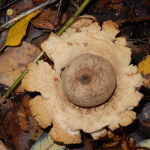
On the 12th of November:
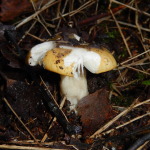
On 18th November, a troop of smallish, tall, pale Coprinus that don’t really turn to the usual black ink, growing on woodchip beside the path. Seems close to Coprinus impatiens.